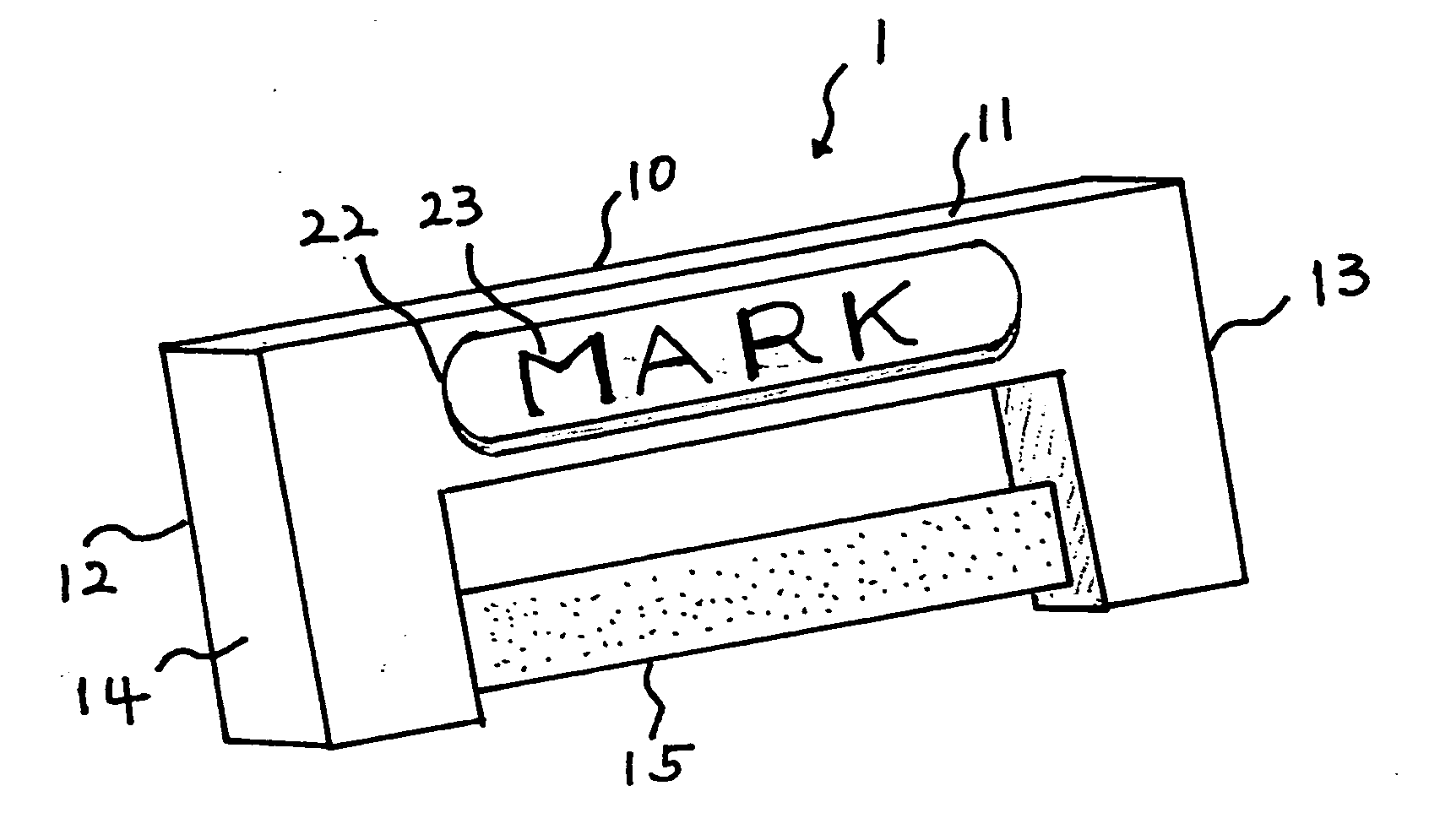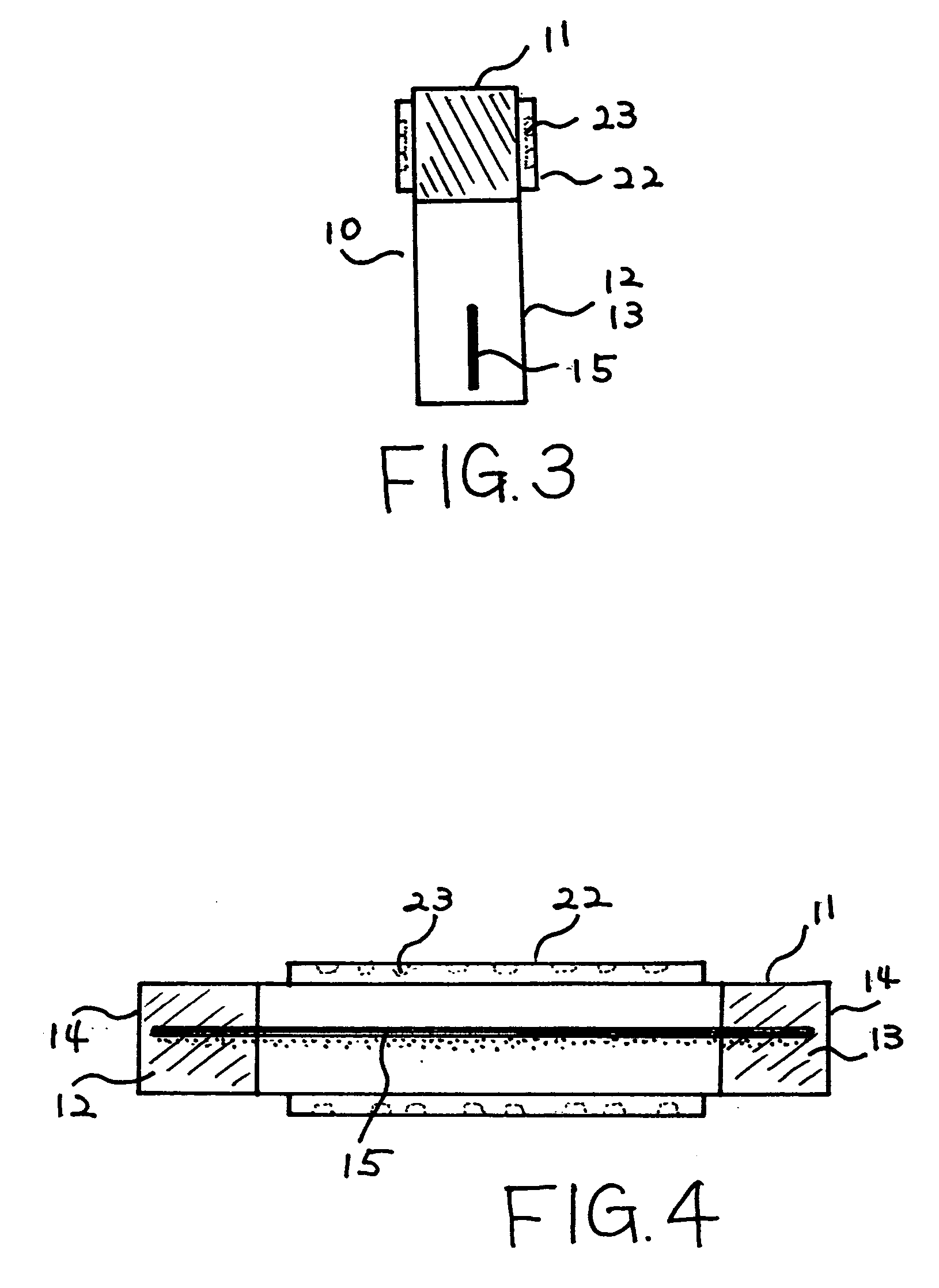Dental filing tool
a filing tool and dental technology, applied in the field of dental filing tools, can solve the problems of inconvenient use, inconvenient use, inconvenient use, etc., and achieve the effects of convenient holding and maneuvering, efficient and effective filing and grinding, and sufficient tension
- Summary
- Abstract
- Description
- Claims
- Application Information
AI Technical Summary
Benefits of technology
Problems solved by technology
Method used
Image
Examples
Embodiment Construction
[0017] The dental filing tool 1 shown as preferred embodiment in FIGS. 1 and 2, comprises of handle component 10 made of a formable material, not limited to but like plastic, which has a horizontal arm element 11 with a first vertical arm 12 extending downward from its first end and a second vertical arm 13 extending from its second end forming an arched structure. Between the first 12 and second vertical arms 13 is a filing strip 15 secured at each of its ends tautly with tension.
[0018] The one or both lateral sides of the filing strip 15 are coated with some superfine abrasive material 16, especially but not limited to diamond dust. The filing strip 15 is coated with abrasive material on its entire or partial surface 16 and 24. The filing strip 15 utilized in the dental filing tool 1 is of the appropriate thickness to be inserted into the interproximal area between teeth and / or crowns, bridges, onlays, or inlays, generally referred to as restorations.
[0019] The outside edges of ...
PUM
 Login to View More
Login to View More Abstract
Description
Claims
Application Information
 Login to View More
Login to View More - R&D
- Intellectual Property
- Life Sciences
- Materials
- Tech Scout
- Unparalleled Data Quality
- Higher Quality Content
- 60% Fewer Hallucinations
Browse by: Latest US Patents, China's latest patents, Technical Efficacy Thesaurus, Application Domain, Technology Topic, Popular Technical Reports.
© 2025 PatSnap. All rights reserved.Legal|Privacy policy|Modern Slavery Act Transparency Statement|Sitemap|About US| Contact US: help@patsnap.com



